Menu
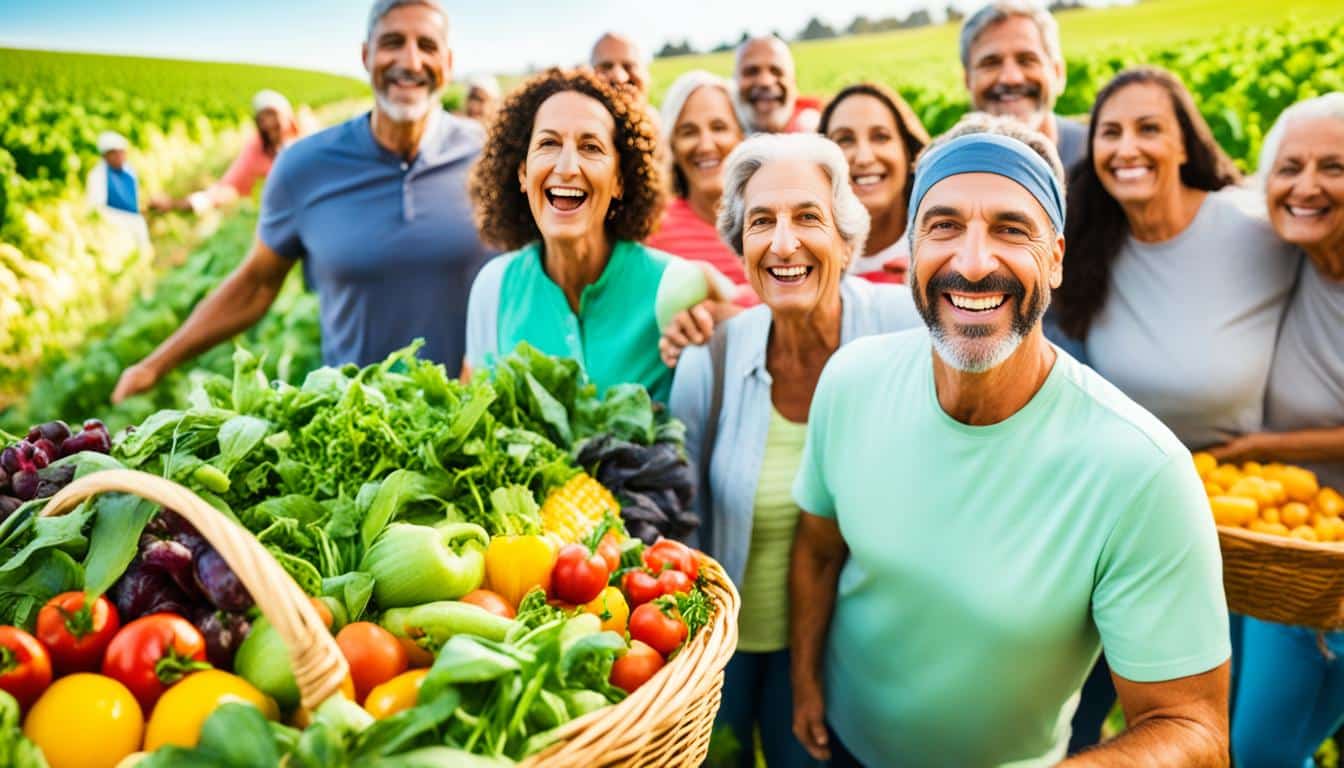
Did you know, only 14% of what you pay for food reaches the farmers? This shows the need for direct links between us and farmers. Community-supported agriculture (CSA) bridges this gap. It helps local food systems by connecting consumers straight to producers. When you buy CSA shares, you’re giving producers the funds they need for seeds and tools.
With CSA shares, you get regular deliveries of food straight from the farm. This encourages eating with the seasons and trying new foods. You also get to know where your food comes from. This builds trust because you can talk to the farmers about how they grow your food.
CSAs have changed over time to suit what consumers want. They now come in various sizes, with flexible pick-up times and choices. This change helps small farms and local businesses. It keeps our food chain strong and close-knit.
Community-supported agriculture, known as CSA, is a way for people to get fresh food straight from local farms. It helps farmers use sustainable methods and boosts food safety. The direct link between buyers and growers makes the farm-to-table idea real.
In CSA, people buy a share at the start of a season and get farm-fresh food regularly. This helps farmers avoid using chemicals, so the food tastes better and is kinder to the earth.
The idea of CSA started in the 1980s. It has changed over time to meet the need for things like subscription boxes. More folks are interested in how their food is grown. They want to support local farmers and have access to healthy food. This led to the growth of CSAs.
CSAs work when consumers and farmers team up. People pay at the beginning of the season, which helps farmers a lot. In return, they get fresh, seasonal food. Today, CSAs have different share sizes and timings, so they fit many people’s lives.
By not using long supply chains, CSAs cut down on transport and processing. This saves money and is good for both farmers and buyers. It also means more variety in the crops grown, which is great for the land.
Joining a Community-Supported Agriculture (CSA) means getting your hands on the best fresh food. The food travels a short distance from the farm to you, sometimes just in a few hours. This means you get vegetables and fruits so fresh they’re packed with nutrients.
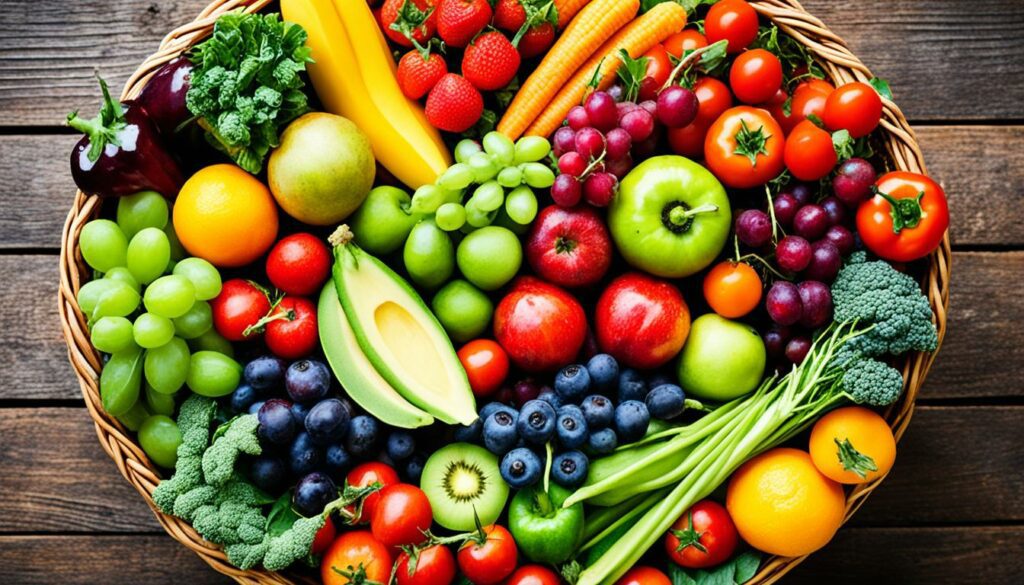
Food from a CSA is harvested and on your table almost at once. This quick journey keeps the food’s nutrition high. It’s perfect for those who love eating healthy, knowing they’re getting every bit of goodness.
With CSA goods, you’ll enjoy them staying fresh longer. They are directly from the farm, so their taste and benefits last. This also helps cut down on throwing away food since they last longer in your kitchen.
Community Supported Agriculture (CSA) is key to making local food supply strong. It helps foster community bonds and supports the local economy. By linking consumers directly with farmers, CSAs keep money at home. They also back small farms and get locals involved in the food circle.
CSAs are vital for strong local ties. Joining a CSA means you get to know your local farmers. This builds trust and a caring attitude towards what you eat. Such direct dealings also boost community work. Everybody wins and the local economy prospers. Besides, there are farm events, workshops, and newsletters to teach you about farming and eating seasonally.
CSAs really help local economies. In North Carolina, over 100 CSAs show people are interested. They offer different shares and ways to pay, so everyone can join in. People typically spend between $400 and $700 each year. There are also options for smaller payments and help for those with less money. This way, farmers get steady income, reducing the risk of the CSA stopping.
The table below highlights the economic flow through various CSA structures:
| CSA Feature | Benefit | Example |
|---|---|---|
| Annual Membership Cost | Ensures consistent revenue | $400 to $700 |
| Member Engagement | High retention rates, strong community ties | Work-share memberships |
| Pay-as-you-go Options | Accessibility for diverse income ranges | Subsidised shares for low-income families |
| Flexible Share Sizes | Customisable to consumer needs | Full & Half Shares |
Community-supported agriculture (CSA) is a special way to get food. It makes the path from farm to table totally clear. By signing up for a CSA, I connect with farmers directly. They use organic methods, making sure my food is safe and grown in a way that’s good for the planet.
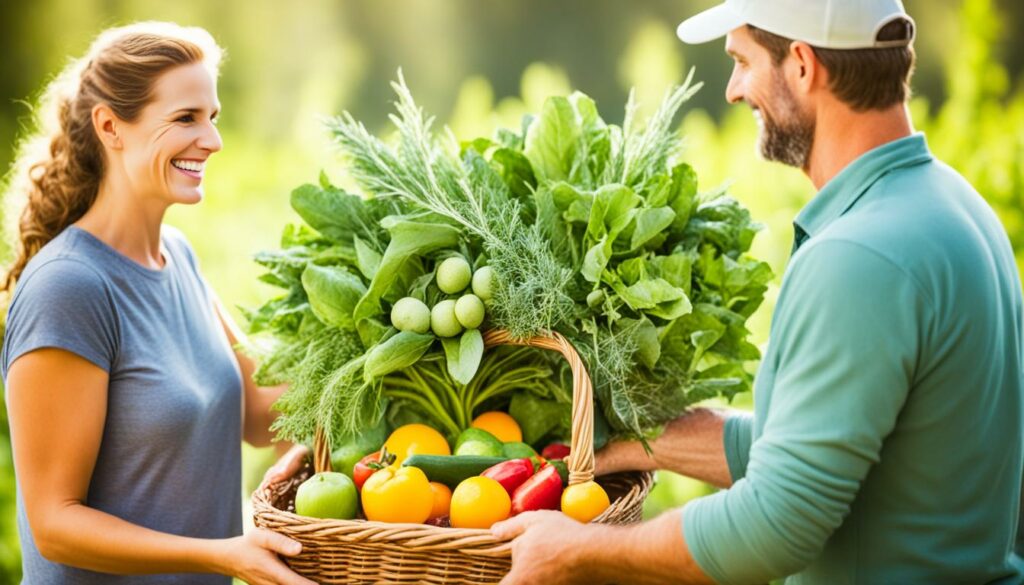
Being part of a CSA means I get to know my farmers. I can actually go to the farms, join events, and see how they grow my food. This close bond lets me ask about their farming and see their love for organic ways. These links with farms make me trust the food I eat even more.
CSAs are very open about how they grow things. Farmers tell us all about their ways of farming, handling bugs, and picking the crops. This honesty is key for people like me who care about where food comes from. Knowing how my food is grown lets me pick foods that match my values. This clear knowledge makes me happy with every box of food I receive.
| CSA Features | Benefits |
|---|---|
| Direct farm connections | Builds trust and supports local farmers |
| Transparent food sourcing | Ensures ethical and sustainable consumption |
| Organic farming practices | Reduces exposure to harmful chemicals |
| Community involvement | Encourages active participation and learning |
Community-supported agriculture (CSA) plays a big part in making sure we have enough food. By joining a CSA, people make sure they have fresh food all through the farming season. This deal means they don’t have to worry about whether the market will have the produce they need.
In the United States, more than 2,500 CSAs give people access to fresh, local food. Take North Carolina for example, it has over 100 CSAs. This high number shows how many people are using this system. With CSA shares costing between $400 and $700 a year, this approach supports farmers too. It gives them money upfront, which helps them avoid financial risks and supports sustainable farming.
CSAs use different ways to decide how much a share costs. They might look at the average market prices, calculate their costs, or follow community farm models. To make shares more affordable, many CSAs allow for payment plans. Some even let members pay by working on the farm.
To keep their members, CSAs work hard to make them feel involved and informed. They do this by including them in farm activities, offering educational talks, holding social gatherings, and sending out newsletters. Surveys help them understand what their members want too.
Helping people learn how to enjoy food that’s in season and local is important. CSAs use events, cookbooks, and regular updates to teach their members. This learning is key to making sure the food supply remains strong and reliable.
Even when faced with bad weather or social problems, CSAs are still doing well. In places like India, Sub-Saharan Africa, and Brazil, the success of CSAs shows how they boost food safety. Their focus on sustainable methods pays off in the long run.
Studies show that CSAs bring many good things. Not only do they improve the food we eat and the environment, but they also help farmers by giving them a steady income. At the same time, they draw communities together in producing food. This all helps make sure we have plenty of good food available.
Community Supported Agriculture (CSA) lets people try seasonal crops. Subscribers get to see and taste new vegetables and fruits. This isn’t like going to a regular shop. It’s an adventure in healthy eating.
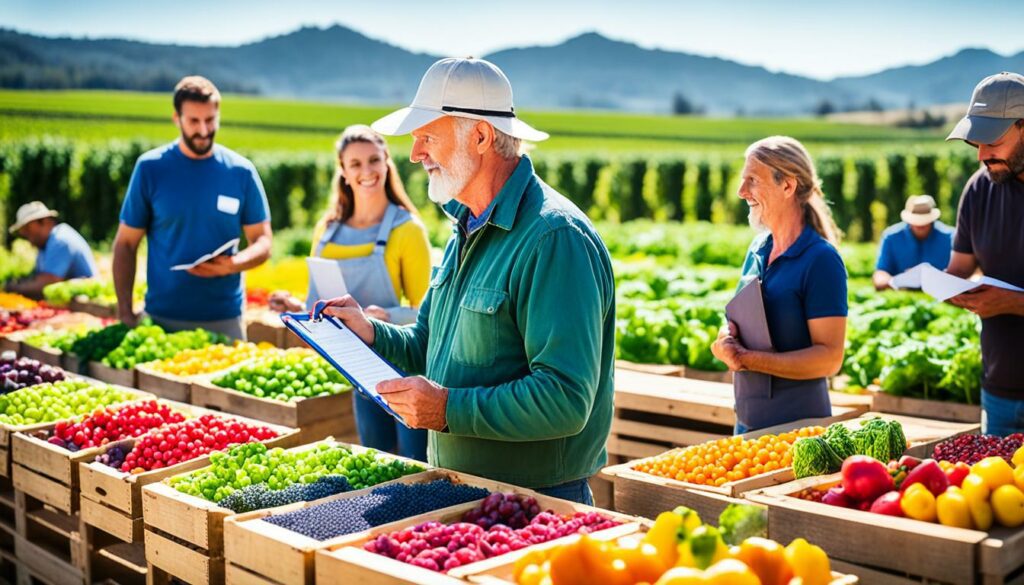
CSAs offer fresh produce that’s in season. So, members always get the best in taste and nutrition. Because it’s freshly picked, the food is at its healthiest. This makes every bite full of goodness.
Joining a CSA opens the door to many new foods. Eating these fresh, unique fruits and veg can make meals fun. It brings new tastes and textures to the table. This makes a person’s diet much more varied and healthy.
| Aspect | Benefit |
|---|---|
| Seasonal Crops | Freshness and nutritional value |
| New Vegetables | Varied diet, new flavours |
| New Fruits | Diverse and exciting meals |
| Consumer Engagement | Direct insights into farming practices |
Being part of a CSA means eating a wide range of fruits and vegetables. It makes cooking and eating fun. Plus, it shows support for farmers, all while being eco-friendly. It’s a win-win that makes food more enjoyable.
Community Supported Agriculture (CSA) strongly supports sustainable farming practices. It helps farmers spend more time on the land and less on marketing. The result is using farming methods that help the Earth. These methods also give people who care about organic agriculture the food they want.
CSA programmes that run all year are becoming more popular. Thanks to new farming technology, farmers can grow a wide variety of fresh food all year round. This helps the environment by cutting back on using traditional shops for food, which offer less variety of fruit and veg.
Being part of a year-round CSA introduces a lot more food variety into your diet. It lets you try lots of different fruits and vegetables that are grown nearby. Plus, most of the food is grown with organic or sustainable farming practices, so you eat less harmful chemicals.
When you join a year-round CSA, you’re not just feeding yourself. You help keep local farms, plants, and water safe. This support encourages farmers to keep doing things in a way that helps the Earth. It also keeps local farms alive and active.
Year-round CSAs can also give you items like eggs and honey. They offer payment plans that are easy on your budget. You also get to choose what you get each week and know ahead what’s coming. These benefits make it easy to eat well, live well, and protect the planet.
| Traditional Grocery Stores | Year-Round CSA Programs |
|---|---|
| Limited fruit and vegetable varieties | Diverse range of produce |
| Exposure to chemicals and pesticides | Organic and sustainable farming practices |
| Less direct consumer-farmer connection | Enhanced community trust and loyalty |
| Higher prices for fresh produce | Discounted, locally sourced produce |
In the end, CSA memberships are all about connecting people who grow food with those who eat it. They build trust and loyalty in communities. Through educational farm visits and workshops, CSAs show us where our food comes from. They teach us about the benefits of sustainable farming. And, these farms are smartly set up to keep growing food, even if there are problems with crops. This means CSAs can keep providing good food all year to their members.
Community-supported agriculture (CSA) schemes aim to lower how much farming affects our world. They focus on giving out food locally. This means less travel and fewer carbon emissions. It supports farming methods that are kind to the planet.
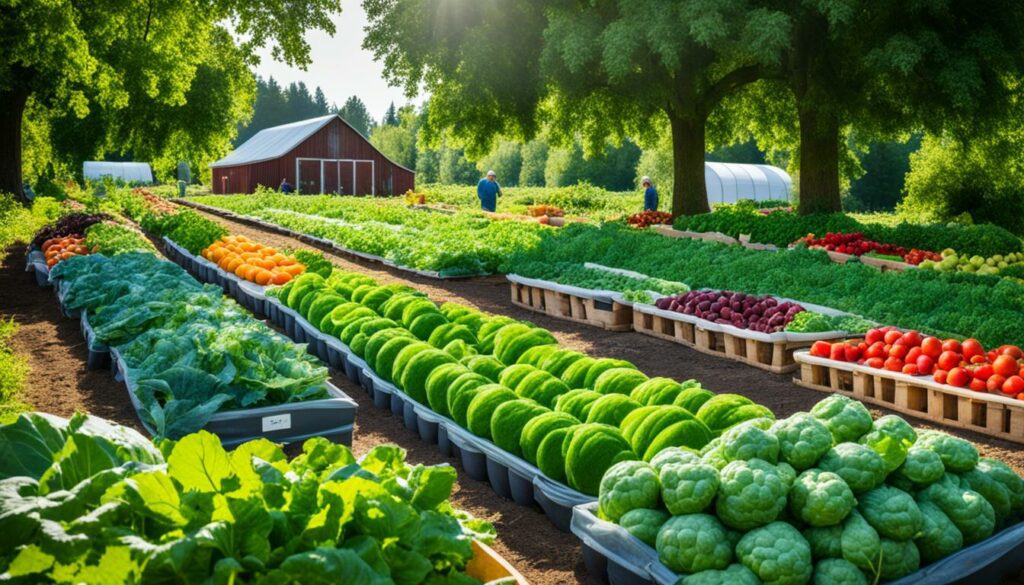
CSAs get their goods from nearby farms. This means the food doesn’t need to travel far. We play a part in reducing carbon emissions from transport. It’s a big step towards a greener food chain.
CSAs also help cut down on packaging. They send food straight from the farm. This means less plastic and paper waste. It’s a key part of farming in a way that looks after our planet.
| Impact Area | Traditional Practices | CSA Practices |
|---|---|---|
| Carbon Footprint | High due to long transportation distances | Substantially reduced with local sourcing |
| Packaging Waste | Excessive due to retail requirements | Minimal through direct farm-to-consumer delivery |
| Community Engagement | Limited | Enhanced through direct interactions and support |
| Economic Impact | Up to $10 billion loss in public health costs | Support for small-scale local farmers and sustainable agriculture |
Community Supported Agriculture (CSA) models bring several economic benefits for farmers. These include getting money upfront. This is important because it provides financial support for farmers right at the start of the growing season.
CSA shares bought by consumers early in the season give farmers instant cash. This helps them pay for early needs like seeds and tools. Such financial support for farmers kicks off their farm work the right way.
With CSAs, farmers sell directly to consumers, skipping middlemen. This means farmers can keep most of their money. They then have more to spend on their farms and in their local areas.
| Benefit | Description |
|---|---|
| Upfront Payments | Enables farmers to cover early-season costs for seeds and tools. |
| Higher Retained Earnings | Farmers keep a larger percentage of profits compared to traditional retail. |
| Financial Stability | Provides a dependable revenue stream and a reliable market for produce. |
| Community Reinvestment | Economic benefits are reinvested into local communities, strengthening local systems. |
The benefits of CSAs are big, helping agriculture be more profitable. They also make sure farmers have steady financial help. This all supports local farming and provides a market for good quality food.
Community-Supported Agriculture (CSA) has changed a lot. It now offers many choices for today’s shoppers. A key feature is the customisable CSA shares. This lets people pick just what they like.
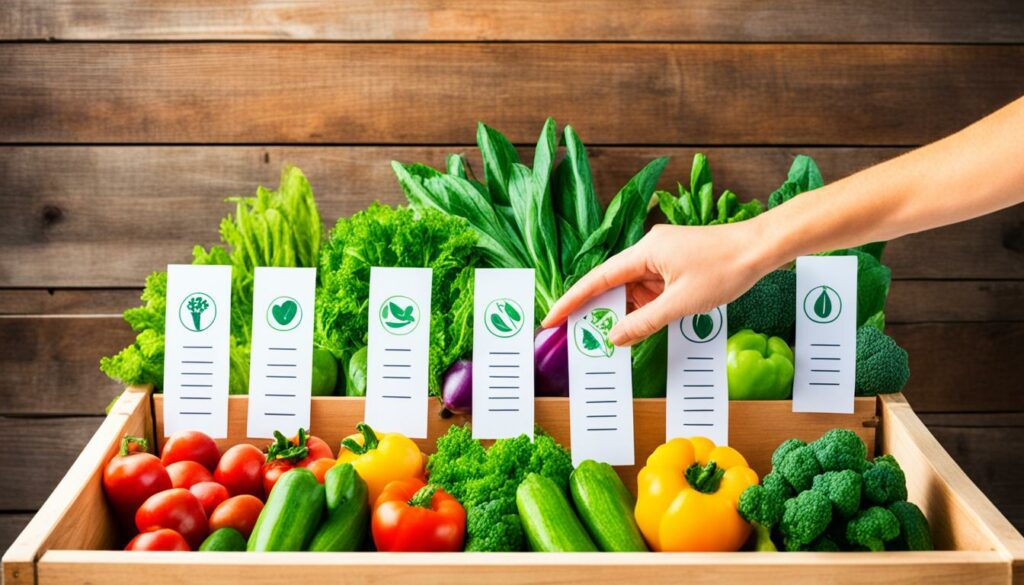
Being part of a CSA means you can change your food each week. You get to pick how much and what kinds of food you want. This is great for families that are always busy. It means getting your fresh food is easy and fits your schedule.
A more personal touch also makes CSAs popular. They let you pick when and where you get your food. This means it’s simpler to add local, fresh food to your daily life.
CSAs are growing fast, according to USDA findings. In 2012, over 12,000 farms used this model to sell food. This was much more than in 2006. The rise shows how much people like the choice and personal touch CSAs offer.
Thinking about signing up for a CSA? You can find one that works for you. The flexible options mean enjoying fresh food is easy, even for busy people.
Community-supported agriculture (CSA) programs in Santa Clara County are key to building strong community ties. They also offer valuable chances to learn. Joining a CSA means getting fresh, local produce. But, it’s also a way to get involved in farming practices and learn about living sustainably.
CSAs often hold events and workshops right on the farm. These farm workshops are hands-on. Participants can learn everything from planting to how to harvest. They also teach about sustainable farming. These experiences help people feel closer to their food. This fosters more care and respect for where our food comes from.
CSAs are big on working and learning together. Joining agricultural learning programs means you get to swap knowledge with others. They, like you, care about community engagement and living sustainably. These programs often let you volunteer on farms, visit them, and learn about green farming practices. This not only boosts what you know but also grows the community’s desire for a greener future.
Being in a CSA is more than just getting fresh food. It’s about sharing, learning together, and feeling part of a community. It’s a great opportunity for those who want to support a strong, local farming system.
The farm-to-table journey is vital in community-supported agriculture. It offers a fresh food look from seed to plate. This way, members form a strong connection with what they eat.
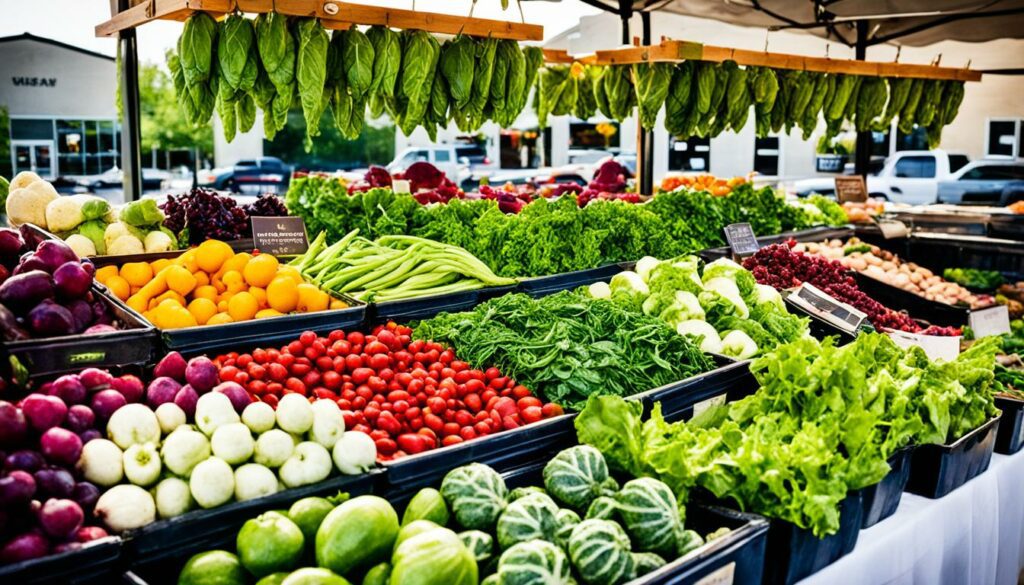
In year-round CSA programmes, members love visiting the farms. This builds their knowledge about eco-friendly farming. It also deepens their support for local foods.
Joining a farm-to-table effort gives customers the best produce, just harvested. This local food arrives in a few days, staying nutritious and tasty. This is unlike supermarkets, where food travels far and loses quality.
| Aspect | Farm-to-Table | Traditional Retail |
|---|---|---|
| Nutritional Value | High | Moderate to Low |
| Time from Harvest | 1-2 Days | Days to Weeks |
| Environmental Impact | Low (reduced food miles) | High (long-distance transport) |
CSA programs also enhance farm visits and learning. People see the benefits of sustainable farming. They help save farmland, plants, and nature, making a big impact.
Finally, the farm-to-table model makes every meal special. It honours local food and eco-friendly methods. This strengthens the bond between those who eat and those who farm.
Community-supported agriculture (CSA) brings big changes that are good for the planet and for farming. It uses green farming methods which help the local area. By growing crops that fit the environment, CSA farms help nature and make less harm to the planet. They show they care about the future of our world by making these choices that save the earth.
Many people in CSAs are making the earth better by what they eat. They use less fuel, make less pollution, and stop using harmful bug sprays. This change means they are kinder to the planet. Also, growing food close to home needs less water than big farms do. This proves that small changes in the way we farm can do a lot for our world.
Being part of a CSA helps not just the earth but also our wallets. In the United States, bad farming cost over $10 billion in health and damage to the environment. CSAs fight this by selling food that doesn’t need to travel far. This means less processing and transport costs. So, buying from a CSA is not just good for the planet but also cheaper and healthier for us.
Community-supported agriculture (CSA) offers a wide range of health benefits. Eating fresh, local produce boosts your nutrient intake and lowers chemical exposure. So, joining a CSA can really improve your health.
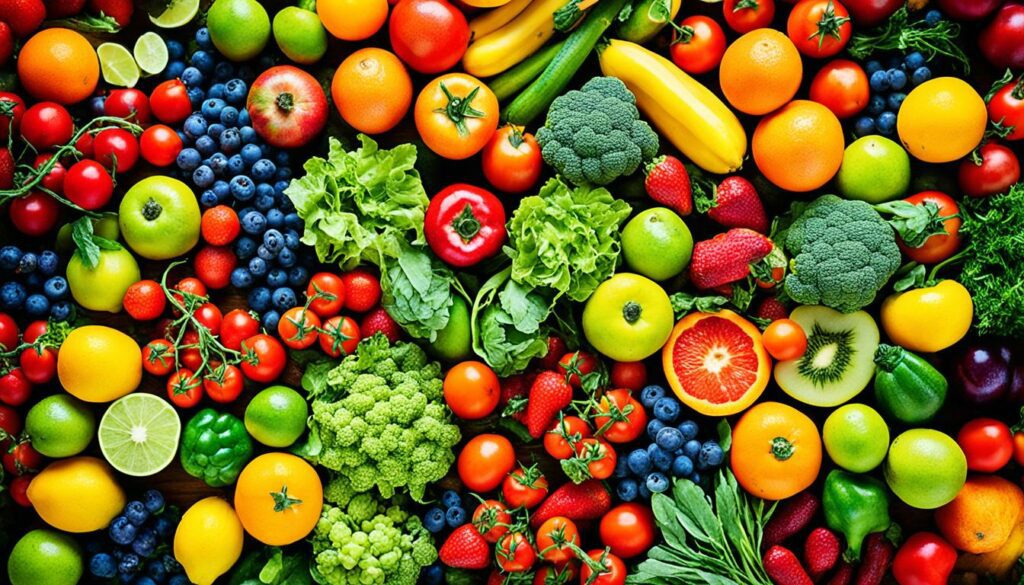
CSAs deliver freshly picked produce to you. Because it’s not stored or shipped far, up to 95% of its nutrients stay intact. A study by Michigan State University showed that 70% of CSA users were drawn to its fresh, nutrient-packed food.
This is great news for health-conscious people. Eating fresh, farm-to-table food enhances your nutrition in big ways.
CSAs often grow their produce without harmful chemicals. This means eating food that’s not only fresh but also pesticide-free. By choosing organic, you cut out substances that could harm your health.
Eating food with fewer harmful chemicals leads to better health and a happier mind.
In short, CSAs are a treasure trove for health. They offer nutritious, pesticide-free food that’s unbeatable for your diet and well-being.
Community-supported agriculture (CSA) has many benefits. It focuses on fresh produce, sustainable living, and supporting local food systems. Freshness is a key advantage. CSA produce is picked a few days, or even hours, before delivery. This ensures the food is at its tastiest and most nutritious.
The CSA model also helps farmers with their money. Farmers get paid up-front by the people who buy their produce. This lets them pay for things like seeds early on. They don’t have to rely on loans with high interest.
Joining a CSA helps build closer ties within a community. People in the CSA can talk to the farmers who grow their food. They can ask about how it’s grown. This makes buying food feel more personal and trustworthy.
CSA members often get to attend farm events and workshops. These events are fun and help strengthen relationships. They also support learning together and feeling like part of something bigger.
CSA boxes come in various sizes to suit different people’s needs. This way of serving people’s needs individually is becoming more common. It makes it easier for more people to join a CSA. Thus, they get to try a wide range of fresh foods, including rare types.
Buying from local CSAs is also good for the environment. It cuts down on waste and the pollution caused by transporting food long distances. This aligns with living in a way that doesn’t harm the planet.
This table shows how CSA membership can make a big impact in several ways:
| Benefit | Impact |
|---|---|
| Fresh Produce | Higher nutritional value, longer shelf life |
| Economic Stability for Farmers | Up-front payments cover initial costs, reduced need for loans |
| Community Engagement | On-farm events and workshops, strengthened community bonds |
| Flexibility in Shares | Personalised options, adaptable share sizes |
| Environmental Benefits | Reduced packaging waste, lower carbon footprint |
All in all, CSA offers many benefits. These include getting fresh food, helping the planet, and feeling more connected within a community.
Joining a CSA offers a chance to support local farmers and get fresh produce. If you live in New York City, you have over a hundred CSAs to choose from. The process of joining is simple and can be very rewarding.
Discovering a local CSA is easier than you think, thanks to a wealth of resources. In New York City alone, there are 110 CSAs today, showing how popular they’ve become. Look out for them at local events, check online databases, or ask community food experts for help. Most CSAs will have their membership details and what you’ll receive on their websites.
When choosing a CSA, think about what membership best fits you. For instance, in New York City, a season’s share costs between $300 and $400. That’s about $12 to $18 a week. Some CSAs have lower rates for those who need it and let you spread the cost over time.
Remember, being part of a CSA often involves helping out or attending events. It’s a way to keep the costs down and build a community feel. Knowing this upfront will help you adjust and enjoy the experience more.
Community-supported agriculture (CSA) connects consumers directly with farmers. It ensures a clear local food supply. By paying upfront, farmers get the funds they need early. This helps them grow quality produce sustainably.
CSA shares are varied to include different foods. Subscribers get fresh, local produce regularly. Recent changes make CSAs more accessible, offering varied pick-up times and the chance to pick what you get.
Having produce picked just before it’s delivered means it’s very fresh. This lets consumers talk to farmers, understanding how the food is grown. It creates a bond between the producer and the buyer.
Traditional CSAs rely on early payments. This helps farmers avoid high-interest loans, investing in their future. Flexible buying options also mean more people can join in, supporting small farmers. This way, they have a reliable income.
With new tech, CSAs can now produce food all year round. This increases food variety and quality. It also helps farmers have a steady job, promoting sustainable agriculture. CSA food is often grown using earth-friendly methods, good for both our health and planet.
Joining a CSA means being a big part of your local agriculture. It helps your community and the environment. By choosing CSAs, we choose a better, greener life.
CSA gives us fresh, top-quality produce and supports local farms. It helps in protecting the environment and ensures we always have food. With a CSA, you get to know your neighbours better and care for the Earth more.
CSA stands for Community-Supported Agriculture. People buy into a local farm and get fresh crops regularly. This helps the farmers prepare and makes the food available to you.
Members buy shares at the start of the season to help farmers upfront. In exchange, they receive fresh farm produce during the growing season. This supports both the farmers and the members.
CSA produce is picked shortly before delivery. This keeps its nutrients intact. Unlike store produce, it doesn’t lose its goodness during long travels and storage.
CSAs connect you with local farmers, which boosts the area’s economy. It keeps small farms going and helps the community grow. This support is good for everyone.
Discuss farming directly with your CSA farmer. Pick those who farm like you think they should. This trust in your food comes from knowing where it comes from and how it’s made.
Prepaying for your CSA share means you’ll have fresh food all season. It makes you less reliant on outside food sources. This steady supply keeps you secure.
CSAs introduce you to different, healthy foods. You might find new favourites this way. It adds variety and health to your meals.
CSAs let farmers focus on their land and use responsible farming. This includes being kind to the Earth. It’s good for the planet and for those who love sustainable food.
CSAs deliver local food, meaning less travel and less waste. This cuts down on pollution and trash, promoting a green way of farming.
By getting paid upfront, farmers can start their season well. They also keep more of their profits this way. This makes farming financially better and helps in community growth.
CSAs often let you choose your share size and what produce you get. They also make it easy to pick up or get your food. This fits well with how we live today.
Joining a CSA means you can visit the farm and learn about how your food is grown. It’s a fun way to meet people and share what you know about farming.
With CSAs, you see exactly where your food comes from. It connects you straight with the farm. This close link encourages better eating habits.
CSA produce is packed with goodness because it’s so fresh. It’s often grown organically, which is better for you. This means healthier food for your table.
Find a local farm that sells CSA shares. Many offer payment plans. Look at local events or online databases to find one.